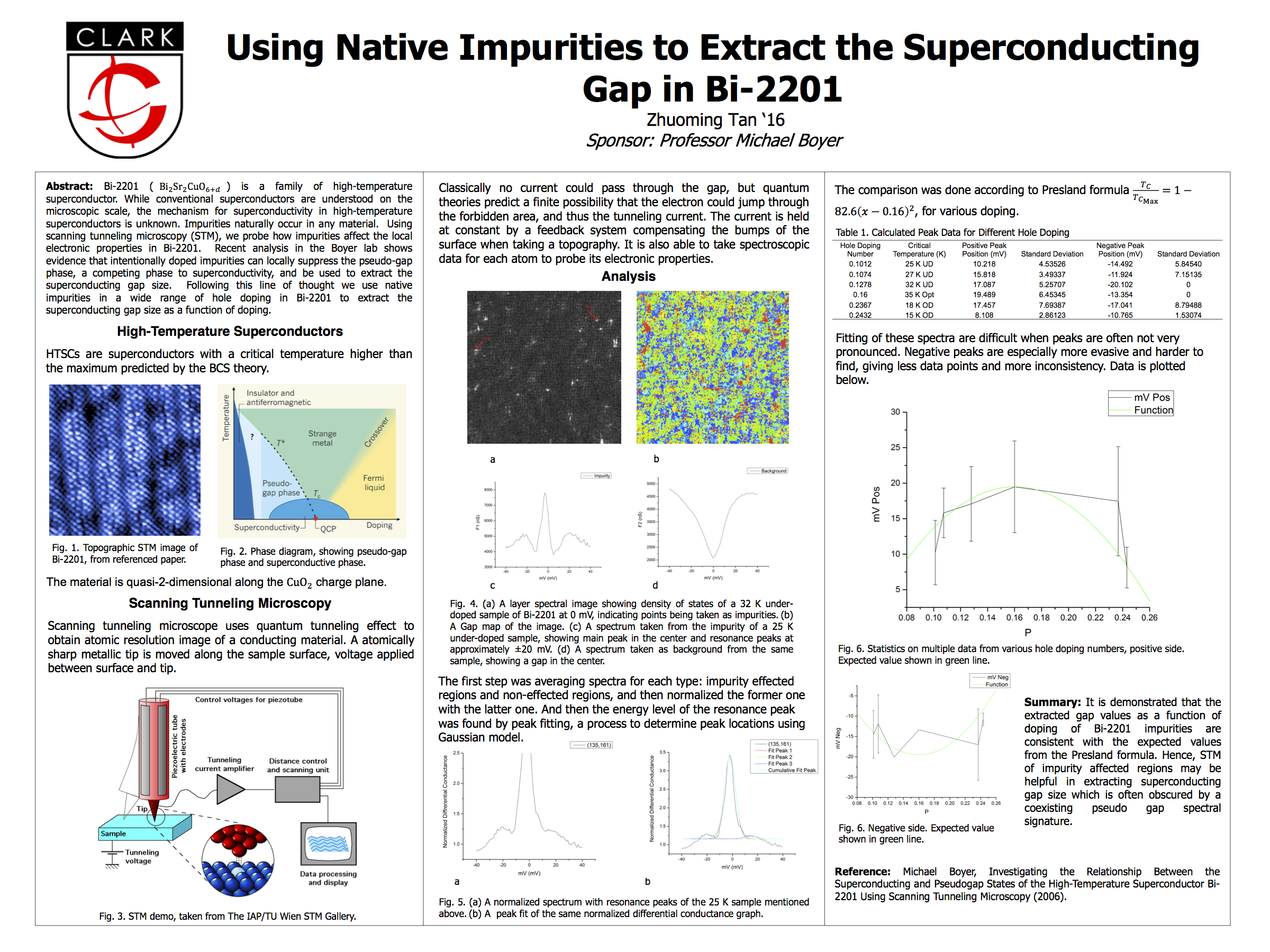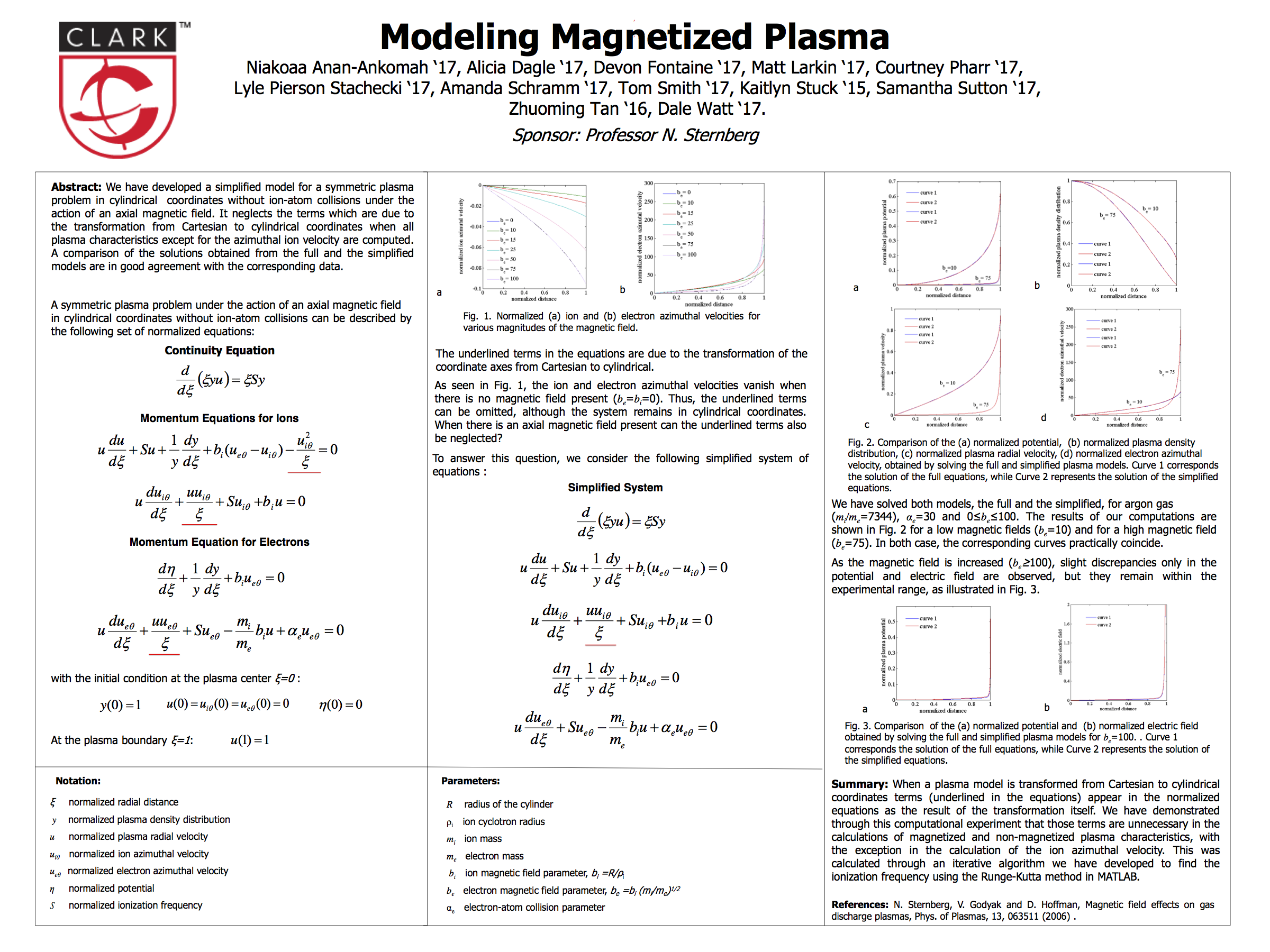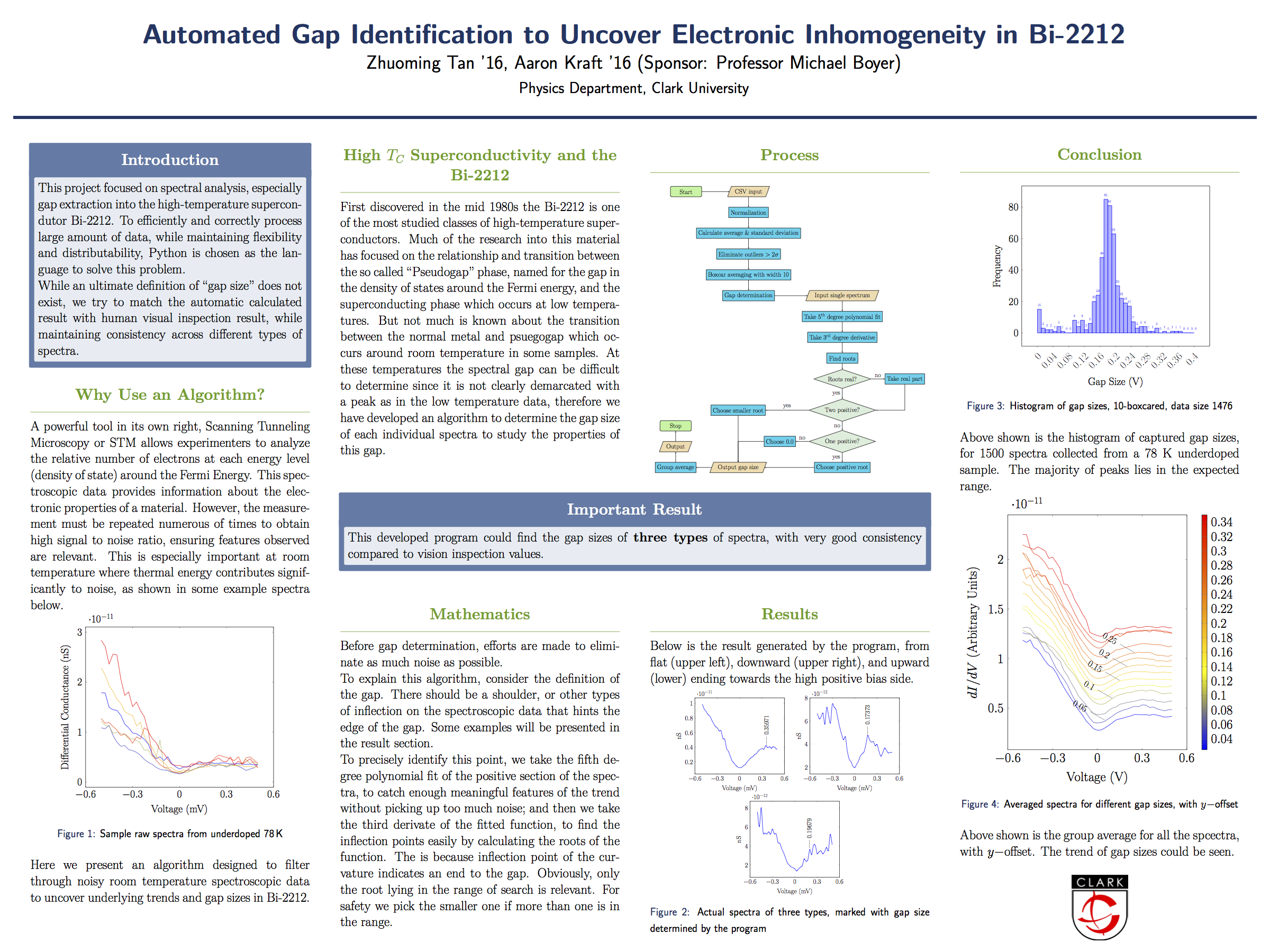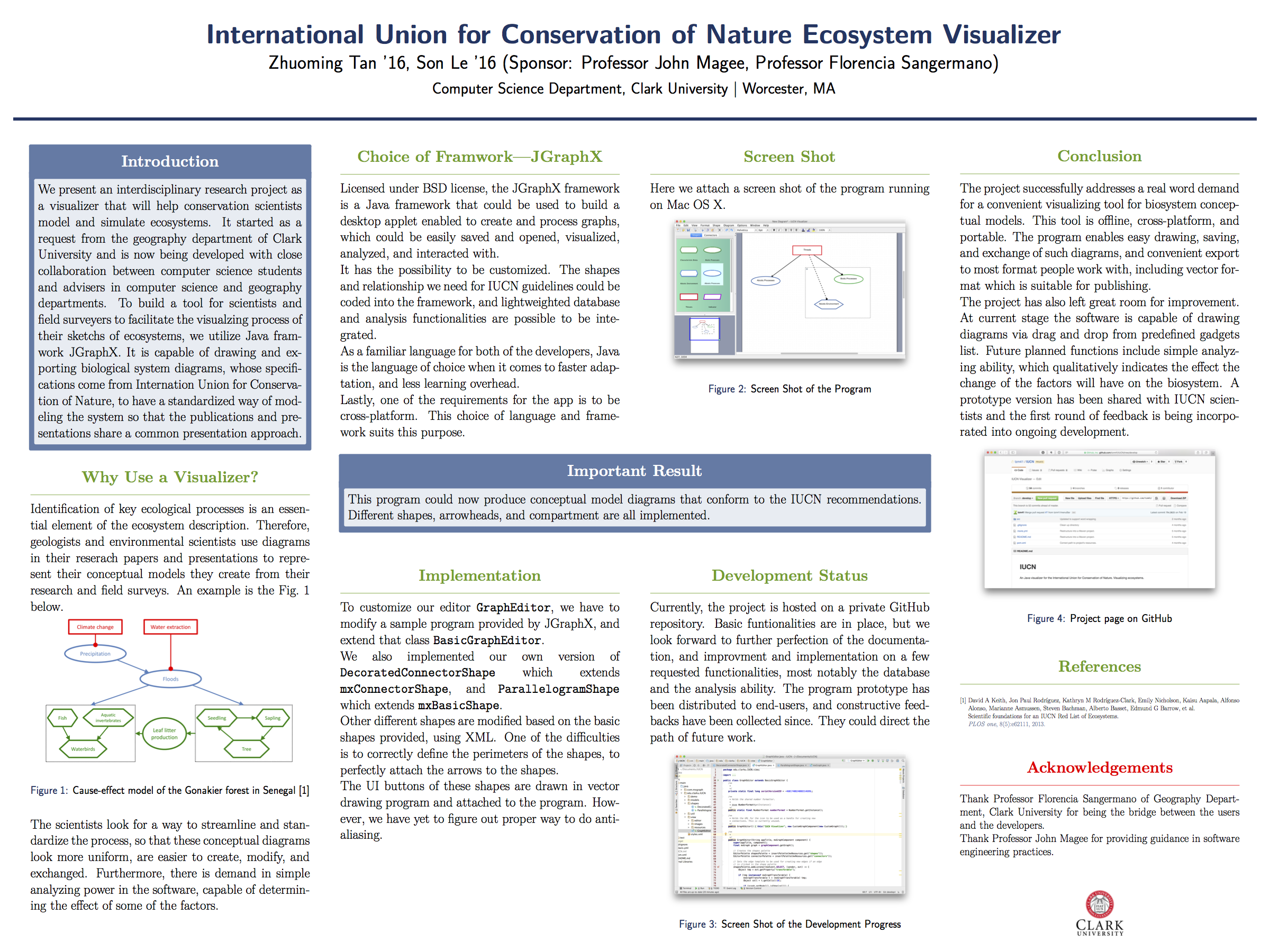
Using Native Impurities to Extract the Superconducting Gap in Bi-2201
Bi-2201 is a family of high-temperature superconductor. Recent analysis shows evidence that intentionally doped impurities can locally suppress the pseudo-gap phase, a competing phase to superconductivity, and be used to extract the superconducting gap size. Following this line of thought we use native impurities in a wide range of hole doping in Bi-2201 to extract the superconducting gap size as a function of doping.

Modeling Magnetized Plasma
We have developed a simplified model for a symmetric plasma problem in cylindrical coordinates without ion-atom collisions under the action of an axial magnetic field. A comparison of the solutions obtained from the full and the simplified models are in good agreement with the corresponding data.

Automated Gap Identification to Uncover Electronic Inhomogeneity in Bi-2212
This project focused on spectral analysis, especially gap extraction into the high-temperature superconductor Bi-2212. To efficiently and correctly process large amount of data, while maintaining flexibility and distributability, Python is chosen as the language to solve this problem.

International Union of Conservation of Nature Ecosystem Visualizer
• Take part in development of an ecosystem model visualization tool for International Union of Conservation of Nature• Developing based on collaboration with scientists from Ecohealth Alliance (NYC) and U of Melbourne (Australia)• An open tool to visualize and analyze ecosystems for scientists• Project hosted on private GitHub repository